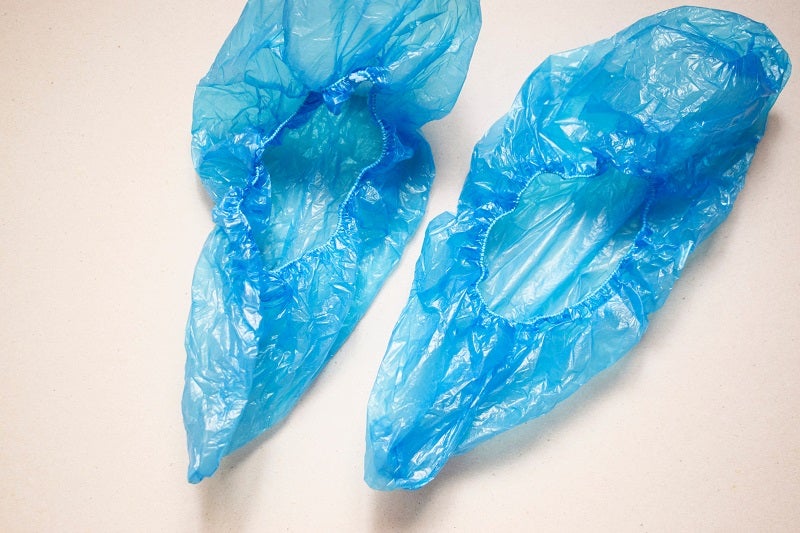
Using single-use disposable items such as peel-off mats produce a huge amount of waste, going straight to landfill. This type of waste is also categorised as ‘contaminated waste’. Contaminated waste needs to be disposed of properly, or it may be harmful to the environment and this procedure can be very costly.
Social media, news websites, and a vast number of advertising campaigns remind us of the millions of tons of plastic waste produced yearly across the globe. Reports indicate that 50% of our plastic waste each year is for single-use purposes.
In our daily lives, we are encouraged to make simple swaps such as using reusable coffee cups and supermarkets issuing 83% fewer plastic bags since charges for these commenced in 2015. There are many ways to curb plastic waste, including producing less, consuming less, and better managing the waste that already exists to prevent contamination or leakage. But how does this mentality transfer into the workplace, particularly into environments where contaminated waste is prevalent?
Contaminated plastic waste in the workplace
According to statistics reported by the World Health Organisation (WHO), 15% of healthcare activities’ waste is considered hazardous (infectious, toxic, or radioactive).
Contaminated waste contains potentially harmful substances that can affect the health and safety of the personnel, the general public, and the environment. The disposal of untreated contaminated waste in landfills can lead to the contamination of drinking, surface, and ground waters if those landfills are not properly constructed.
Facilities must ensure that personnel are trained on how to manage and dispose of contaminated waste. Lack of awareness about the hazards related to contaminated plastic waste, inadequate training in proper waste management, absence of waste management and disposal systems, insufficient financial resources, and the low priority given to the topic are the most common problems, which may lead to this waste not being disposed of properly.
Waste from peel-off mats
Hazardous or contaminated waste, coupled with the disposal costs created by peel-off mats, is not to be ignored. Every peel of a sticky mat results in a 20cm ball of contaminated plastic waste. This generates enough waste to fill multiple dumpsters per year.
Peel-off mats not only create an abundance of unnecessary waste but are also expensive to dispose of properly at the end of their short working life.
In addition, tests by GlaxoSmithKline (Clibbon, 2002) show that disposable adhesive peel-off mats are only 27% effective in preventing foot and wheel-borne contamination.
On average peel-off mats tend to be no bigger than 1m x 1m, this is too small to decontaminate effectively, which makes full-foot and wheel-borne decontamination almost impossible.
Ganging peel-off mats together
Ganging peel-off mats together does address the size issue. However, the practical issues, labour, and material costs involved in peeling 8-10 mats several times each shift makes this an expensive option. 10 peel-off mats ganged together means there is a 20% risk of contamination entering a critical area if peeled twice per shift.
When ganged together; peel-off mats can harbour contaminants in the gaps between them. Dycem offers a seamless solution, with no spaces for contaminants to hide.
Single-use shoe cover waste
The use of multiple pairs of shoe covers per shift, per employee, adds similar amounts of plastic waste expenditures, not to mention the financial implications for the purchase of shoe covers and costs to the disposal of contaminated waste.
Many manufacturers and distributors claim good traction, durability, waterproof capabilities, and most of all contamination avoidance when selling shoe covers. However, the chlorinated polyethylene and polypropylene (PVC) used to make the covers has inherent weaknesses that could create a risk to the critical environment.
Potential risks with shoe covers, such as ripping and slipping, will depend on the materials they are made from. Polypropylene (PP) presents several problems in a controlled environment setting. PP is a non-woven material, which means that it can and will shed particles.
Furthermore, the highest risk is not necessarily through the usage of the shoes but by applying them to the feet. Using dirty/unwashed hands bypasses the purpose of having shoe covers and adds contamination to the underside even before entering critical environments.
How can Dycem make a difference?
The low initial cost of alternatives may seem attractive, however, when comparing Dycem with peel-off mats and shoe covers. Dycem not only costs less over the longevity of both products but, most critically, Dycem vastly outperforms in terms of size, quality, and retention of decontaminants, significantly reducing contamination risks to your business.
Dycem can be cut to any length or width to produce a large enough surface area to allow 99.9% decontamination of foot and wheel-borne contamination and is washable. In order to get near comparable performance to Dycem, at least 8-10 peel-off, tacky or sticky mats need to be ganged together and peeled regularly.
The environmental benefit of Dycem
Dycem is easily integrated into your standard operating practices (SOP) and can be cleaned as part of a regular floor cleaning schedule.
Dycem does not impact your daily waste volumes. It can be disposed of normally in regular waste at the end of its working life, which is 3-5 years.
Contact Dycem today via the ‘Make an Enquiry’ form on this page.

